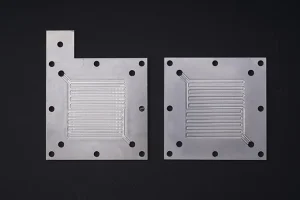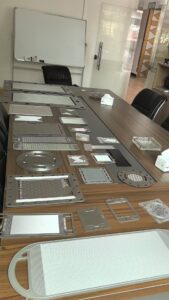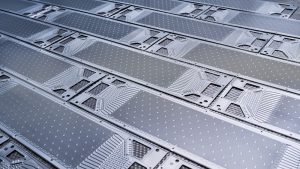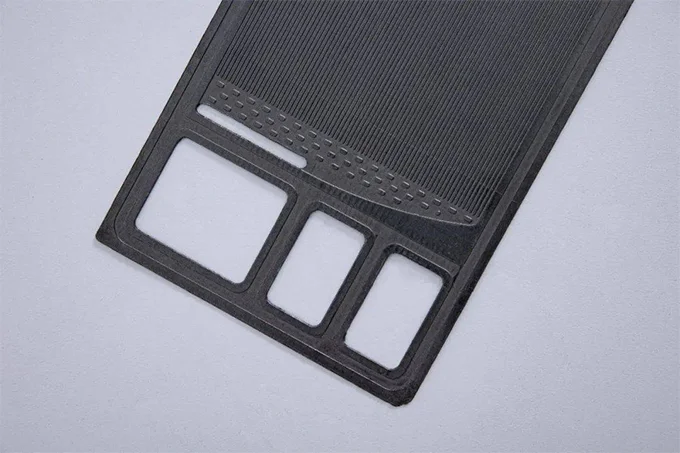Let’s start with the basics. PEMFCs function as clean energy devices to transform hydrogen and oxygen into electricity through by-product creation of water and heat. PEMFC devices serve as powerful instruments for developing environmentally friendly transportation systems and sustainable power technologies.
The Gas Diffusion Layer (GDL) operates as the unproclaimed key element required for smooth PEMFC operation while all its layers function together.
Why the Gas Diffusion Layer Matters
The GDL functions as the oxygen processor that sustains the fuel cell. The diffusion layer sucks in oxygen and hydrogen molecules to send water vapor through various channels that maintain proper fluid movement. Any mistake in the GDL management will cause your fuel cell to either malfunction or stop functioning.

Structure and Location of the Gas Diffusion Layer
The GDL positions itself between the bipolar plate used for gas distribution and the catalyst layer serving as the reaction space. Its three functions as a middleman support the process by providing gas flow and electrical conductivity in addition to moisture management. The GDL works as an all-in-one operating system.
In its core function, the gas diffusion layer serves multiple critical operations.
Electrical Conductivity
One big job of the GDL? Acting as an electronic highway. The bipolar plate gets its electron supply from the catalyst layer through the GDL medium, which enables continuous power movement. Excellent performance of the GDL depends on both its high conductivity and thin nature.
Gas and Water Transport
The GDL is a porous sponge. The small pores inside facilitate oxygen and hydrogen molecules to access catalyst sites easily. The membrane requires water vapor exchange to stay hydrated because proton conductivity depends on membrane hydration.
Water Management and Flooding Prevention
A major role of GDL is to protect fuel cells from flooding issues. Excessive water accumulation inside the catalyst layer results in gas flow blockage and subsequent performance death. GDL functions as water drainage by acting as the moisture gutter system for the fuel cell.
Material Composition of GDLs
Carbon-Based GDLs
Present-day gas distribution layers consist mainly of either carbon paper or carbon cloth materials. Why? GDL materials possess several beneficial properties, such as lightweightness, an affordable price tag, and excellent electric conductivity.
Metal-Based GDLs
The use of metal-based GDLs (including titanium and stainless steel meshes) remains very uncommon because they excel in harsh conditions by combining durability with thermal stability properties.
Composite Materials
Additives and polymers, together with carbon, enable some GDLs to achieve improved strength at reduced costs while controlling porosity parameters.

Physical Properties of GDLs
Porosity
High porosity = better gas diffusion and water management. When GDLs have excessive porosity, they become electrically nonconducting. So, it’s all about balance.
Thickness
The electrical resistance decreases when using a thin GDL. Incidental weakness or poor water management arises when the GDL material becomes excessively thin.
Hydrophobicity
Hydrophobicity helps repel water. PTFE (officially Teflon) represents a magic coating that applies to numerous GDLs due to its ability to repel water.
Impact of PTFE Treatment
Why PTFE?
The presence of PTFE within the GDL prevents water absorption, thus allowing gases to maintain their flow.
Trade-offs of PTFE Addition
Too little PTFE, and water clogs the pores. The amount of PTFE applied affects both gas flow and electrical conductivity negatively. It’s a tightrope walk.
Optimal PTFE Content
Research has confirmed that membrane performance reaches its optimal state when incorporating 30% PTFE.
GDL in Membrane Electrode Assembly (MEA)
Sometimes the GDL functions as both a physical support matrix and half of the MEA when the cell is assembled at high temperatures. The GDL serves as the critical base on which cell functionality depends, thus making its selection quite demanding.

GDL and Mass Transport
Diffusion Pathways
The catalyst requires an efficient and uniform gas delivery method. GDL material’s structural and dimensional characteristics establish the rate at which liquid transfers occur.
Challenges of Efficient Transport
The tank performance declines when gas flow becomes blocked due to excessive water content, faulty pressure distribution or improper structural design. The right design approach for GDL effectively eliminates this issue.
GDL Degradation Over Time
GDLs wear out. The fibers in GDL degrade when exposed to heat, water, and physical stress, which causes pore blocking and loss of conductivity. The selection of materials, together with their appropriate treatments, determines how long the system remains durable.
Innovation and Research in GDL Design
Advanced Materials
Science experts conduct experiments with nanofibre materials and graphene coatings alongside novel blend substances to achieve higher performance results.
Surface Engineering
Scientists optimize water behavior and gas throughflow by modifying the GDL surface finish or layer application methods, which are comparable to establishing a racetrack for speed.
3D-Printed and Tuned GDLs
3D printing technology has been added to the development of GDLs. Scientists can create optimal pore networks through this technique for maximum performance results.
Performance Impacts and Optimization
Every fuel cell is different. The fuel requirements for cars differ from those of drones and residential buildings. Engineers adjust GDL dimensions along with its substances and processing to fulfill specific requirements.
Environmental and Cost Considerations
The elements comprising GDLs include carbon and polymers, while metals sometimes complete this list, which requires consideration of environmental and cost implications. For wide hydrogen adoption to occur, GDL materials should combine affordability with sustainability.

Conclusion
Despite little fame, the gas diffusion layer holds, it remains fundamental for fuel cell operation. The material enables gas circulation while managing water flow while enabling electron functioning while ensuring the stability of the cell. Better gas diffusion layers will prove essential for the advancement of efficient and affordable PEM fuel cells in an emerging clean energy market.

